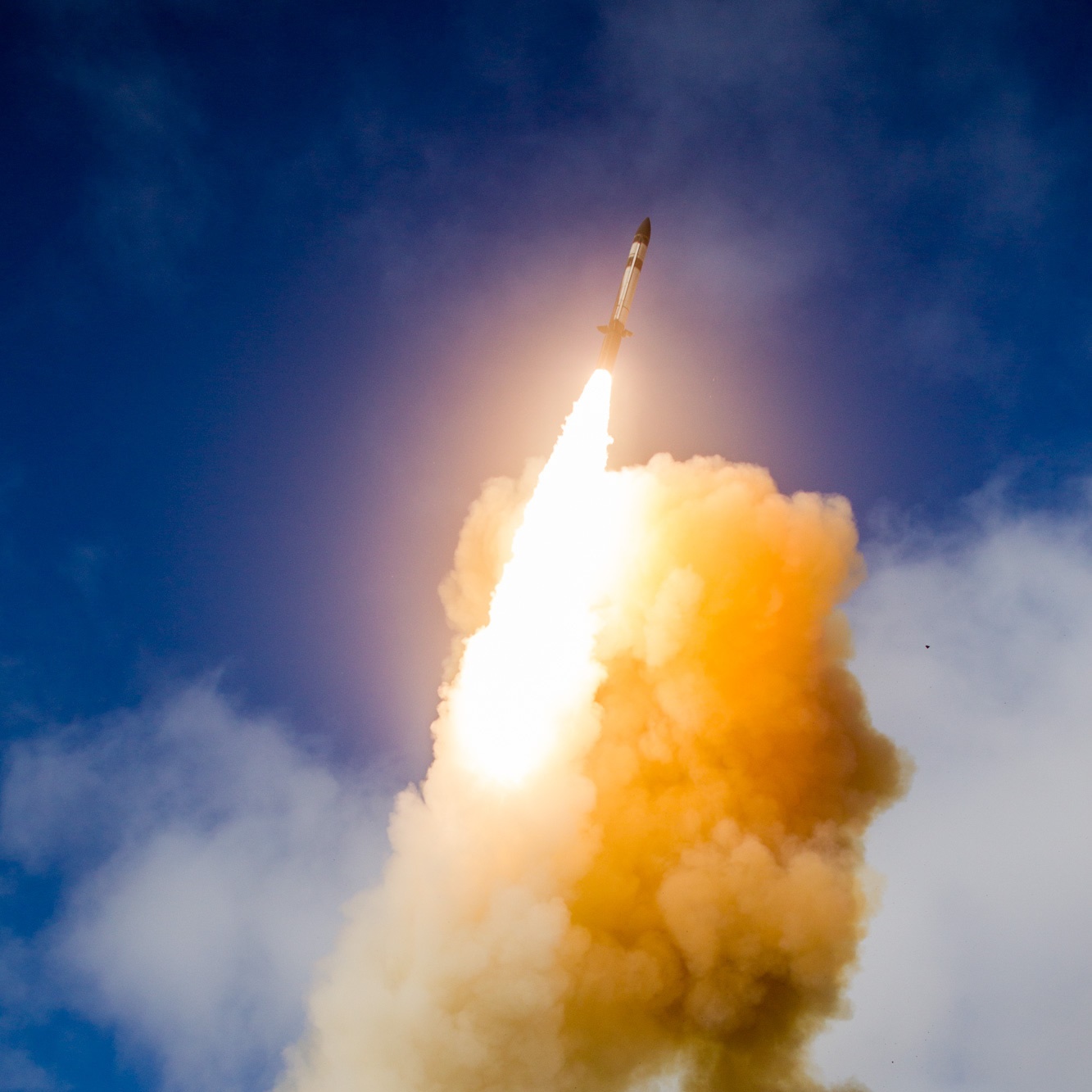Military
The Missile That Failed a Test to Protect the US Against North Korea -- by the Numbers

Published:
Last Updated:

A ballistic missile defense system (BMDS) test conducted last Wednesday off the coast of Hawaii failed when the land-based interceptor missile missed its target. The failure is the second in less than a year for a BMDS intended, among other things, to defend against potential North Korean missile launches.
The Aegis Ashore system, from which the missile was launched Wednesday, was first deployed on U.S. Navy ships beginning in 2011. Land-based test launches began in 2014. The Standard Missile (SM)-3 Block IIA that failed Wednesday increased both the velocity and the range of Aegis Ashore system.
The U.S. Missile Defense Agency (MDA) has been working since 2002 to develop and deploy a BMDS to defend the United States by destroying enemy missiles in flight. The system also would be used to protect U.S. forces deployed abroad, allies and friendly nations. As of 2013, according to a report from the U.S. Government Accountability Office (GAO), the MDA had spent about $90 billion to develop the complex system. At the time, spending was expected to run at about $8 billion per year through 2017, bringing the estimated cost to around $132 billion.
In its 2017 report on missile defense, the GAO said that the MDA had spent approximately $123 billion through fiscal year 2016 and plans to spend another $37 billion through fiscal year 2021. The GAO noted that there have been some problems, however:
Specifically, MDA conducted 10 flight tests, including a major operational test, but it had to delay others, limiting the knowledge gained in fiscal year 2016. In addition, MDA delivered new interceptors, upgraded fielded interceptors and delivered five BMDS level capabilities. However, testing revealed that the BMDS level capabilities delivered will not likely provide robust defense as planned.
The report continued:
[The program] lacks warfighter-approved requirements and sufficient input from Department of Defense (DOD) components. For example, design approaches for several efforts include trade-offs that favor acquiring capabilities sooner and at a lower cost but are at risk of lacking the performance necessary to defeat future threats. By allowing MDA to define requirements but not address concerns with system designs and acquisition strategies, there is an undue level of emphasis being placed on the judgment, needs, and preferences of MDA ahead of the warfighter, decreasing DOD-wide support for some future efforts.
The Standard Missile (SM)-3 Block IIA missile that missed its target last week is made by Raytheon and was launched from the Aegis Ashore missile defense system built by Lockheed Martin.
U.S. Missile Defense Agency spokesperson Mark Wright offered a comment on Wednesday’s events that did not mention the failed test:
The Missile Defense Agency and U.S. Navy sailors manning the Aegis Ashore Missile Defense Test Complex (AAMDTC) conducted a live-fire missile flight test using a Standard-Missile (SM)-3 Block IIA missile launched from the Pacific Missile Range Facility, Kauai, Hawaii, Wednesday morning.
In a test of the SM-3 Block IIA interceptor conducted last June, a U.S. Navy sailor responsible for maintaining encrypted data exchanges between ships and aircraft mistakenly identified the incoming target as a friendly aircraft. That caused the missile to self-destruct, according to a report in Defense News.
The June test was the fourth flight test of the SM-3 Block IIA and the second time it was launched from a ship. The missile successfully intercepted a ballistic missile target in a February test launch, Defense News reported.
The SM-3 Block IIA missile was developed by the United States and Japan, and the Japanese government in December agreed to buy two Aegis Ashore units that Defense Department officials say can cover all of Japan at a cost estimated to be around $1.8 billion for two systems.
The Japanese chose the Aegis Ashore system over a Terminal High Altitude Area Defense (THAAD) system comparable to the one the government of South Korea has deployed. A THAAD system costs about $1.1 billion and Japan would need six to cover the entire country.
Japan also has four ship-based Aegis systems deployed on four of its navy’s destroyers. The government plans to add another four Aegis-equipped destroyers to its fleet over the next several years.
The SM-3 Block IIA missile is also the “centerpiece of the European missile defense system.” In addition to the Aegis Ashore BMDS installed in Hawaii, a similar system has been deployed in Romania and another is planned for deployment in Poland later this year.
A BMDS has long been a goal of defense planners. The problem, however, is that shooting one missile down using another missile is exceptionally difficult. Think of it this way: it’s like trying to hit one bullet by firing another bullet at it. And never missing.
Want retirement to come a few years earlier than you’d planned? Or are you ready to retire now, but want an extra set of eyes on your finances?
Now you can speak with up to 3 financial experts in your area for FREE. By simply clicking here you can begin to match with financial professionals who can help you build your plan to retire early. And the best part? The first conversation with them is free.
Click here to match with up to 3 financial pros who would be excited to help you make financial decisions.
Thank you for reading! Have some feedback for us?
Contact the 24/7 Wall St. editorial team.